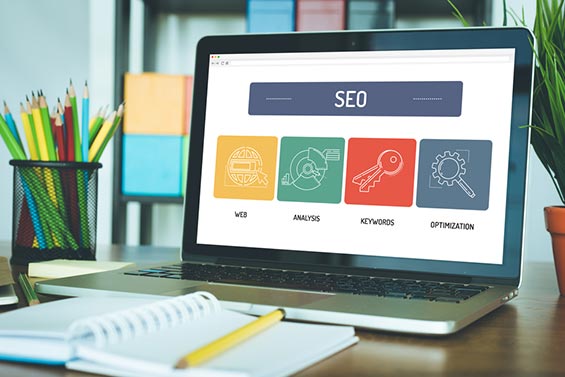SEO: A Journey, Not a Destination
 If you’re coming into this journey thinking of gaming the system, let me tell you, you’ll fall flat on your face before you can say “I am.”
If you’re coming into this journey thinking of gaming the system, let me tell you, you’ll fall flat on your face before you can say “I am.”
As long as you’re hoping to deliver value to customers, making it fun for them to navigate through your website — search engines will notice your effort and give you top spots.
SEO is not about point A to point B. Be prepared to put in the work, understand your target consumers, what they need, wait patiently for results, persevere through some heartbreaking moments, get ready to learn, adapt and evolve, and you’ll climb search engine results.
Sounds like too much work?
SEO professionals have battle-tested, kickass strategies that are effective, work fast, and deliver results. They’re living and breathing this stuff, so you definitely don’t have to.
Hand over the hard work to an SEO professional with amazing client reviews, and you can focus on your business while they do what needs to be done for SEO.
Remember, every single website that’s ranking on SERPs for your target keywords?
They started at point zero for SEO — as you are right now.
Let’s get started today — and I bet your website will catch up!
Read More About Our → SEO Case Studies

 The digital world is vast and wide and complex. To stand out, companies employ SEO, or Search Engine Optimisation.
The digital world is vast and wide and complex. To stand out, companies employ SEO, or Search Engine Optimisation.

 Unless you’ve been bunkering underground for the last five decades, you know exactly what a SERP is — but what does it say about your business (or another) according to your placement on a SERP?
Unless you’ve been bunkering underground for the last five decades, you know exactly what a SERP is — but what does it say about your business (or another) according to your placement on a SERP?
 Let’s break down the most essential elements of SEO that can set you up for success:
Let’s break down the most essential elements of SEO that can set you up for success:
 SEO is dynamic, evolving, and staying proactive and implementing accurate strategies — at the right time — can give you an unbeatable competitive advantage.
SEO is dynamic, evolving, and staying proactive and implementing accurate strategies — at the right time — can give you an unbeatable competitive advantage. I’ve been dying to tell you about Sarah. When she came to me for help, the website for her small bakery (located in Perth) was getting no traffic. Not even the second, third, or fourth page — it was nowhere to be found!
I’ve been dying to tell you about Sarah. When she came to me for help, the website for her small bakery (located in Perth) was getting no traffic. Not even the second, third, or fourth page — it was nowhere to be found! If you’re coming into this journey thinking of gaming the system, let me tell you, you’ll fall flat on your face before you can say “I am.”
If you’re coming into this journey thinking of gaming the system, let me tell you, you’ll fall flat on your face before you can say “I am.”